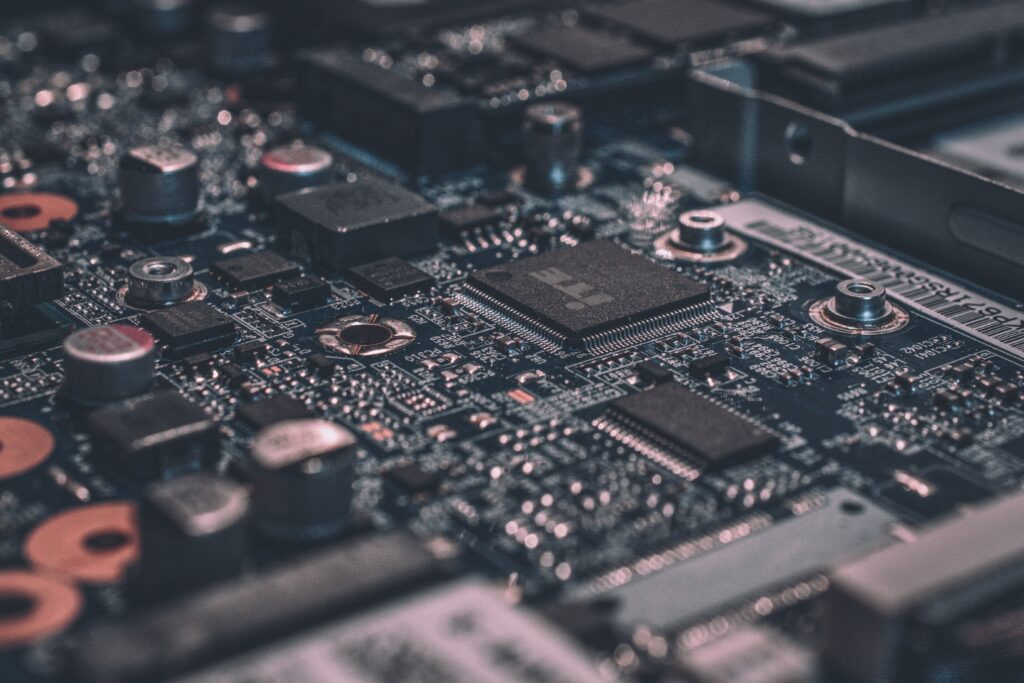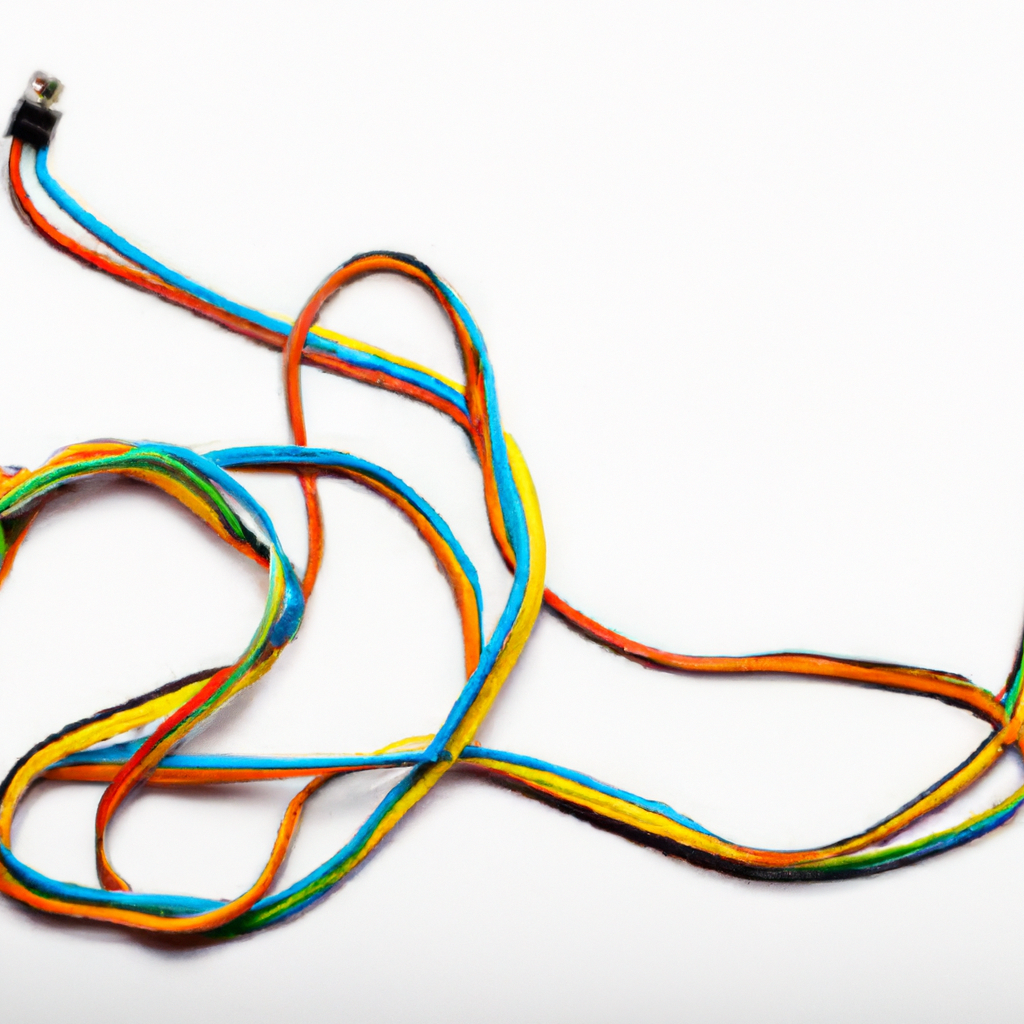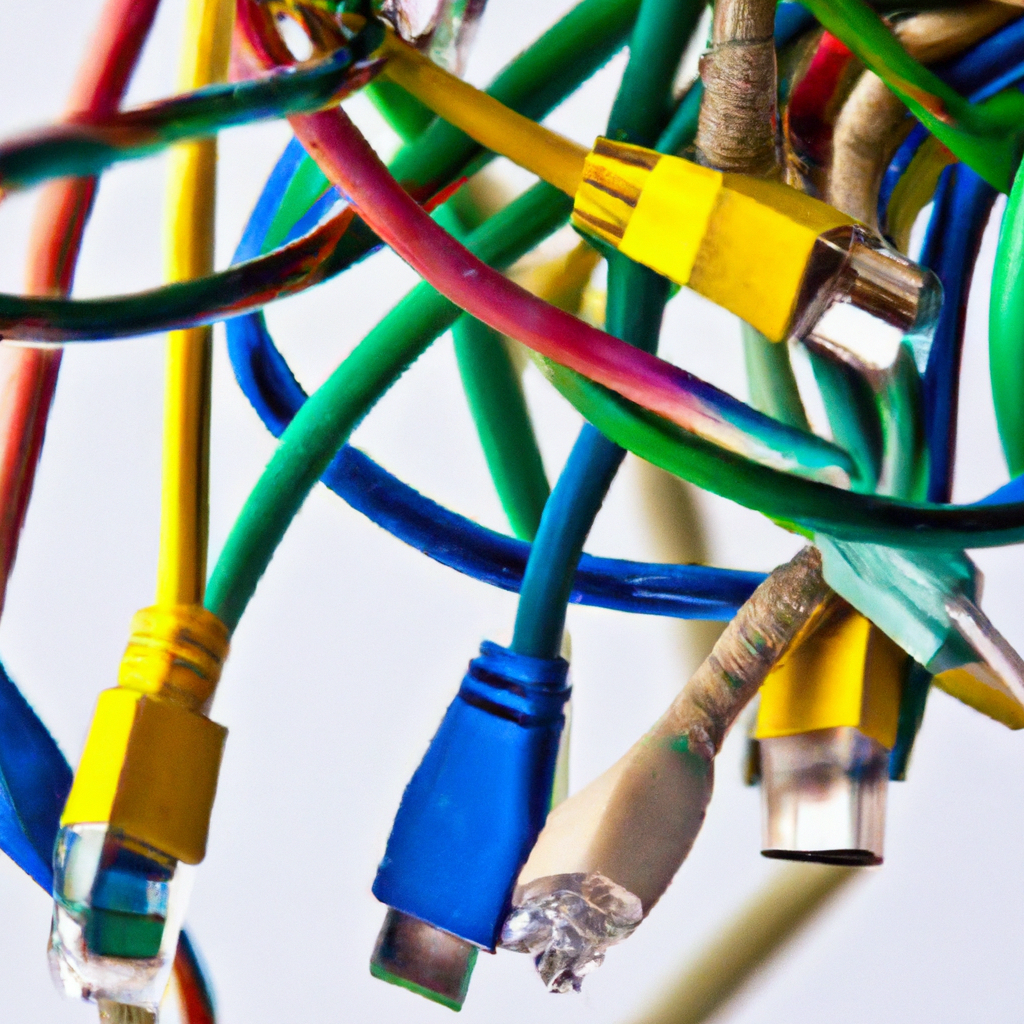What Are The Potential Drawbacks Of Early Adoption Of New Gadgets In 2023?
October 6, 2023 | by Gary Lim

Are you a tech enthusiast eager to be on the cutting edge of the latest gadgets in 2023? While early adoption may seem exciting, it’s important to consider the potential drawbacks that come with it. In this article, we will explore the possible challenges that could arise from being an early adopter of new gadgets. From compatibility issues to limited software support, we will delve into the factors that may impact your overall experience. So, grab a cup of coffee, sit back, and let’s explore the potential drawbacks of being ahead of the curve in the world of technology.
Drawbacks of Early Adoption of New Gadgets in 2023
Are you eager to be at the forefront of technology by getting your hands on the latest gadgets in 2023? While there may be excitement and anticipation surrounding early adoption, it’s essential to consider the potential drawbacks. In this article, we will explore the various challenges and concerns that may arise from embracing new gadgets too early. From higher cost to privacy and security concerns, we will cover it all to help you make an informed decision. So, before you take the plunge, let’s examine the disadvantages you should be aware of.

Higher Cost
Price Inflation
One of the primary drawbacks of early adoption of new gadgets is the higher cost involved. As an early adopter, you often pay a premium price for being among the first to experience cutting-edge technology. With limited supply and high demand, manufacturers tend to increase prices to maximize profits. This price inflation can significantly impact your budget, making the latest gadgets out of reach for many consumers.
Limited Options for Affordable Models
Furthermore, when you choose to adopt new gadgets early on, you may find yourself with limited options for more affordable models. Manufacturers often release entry-level or budget-friendly versions of their devices after a while, offering similar features at a lower price point. By waiting a bit longer, you give yourself the opportunity to explore a wider range of options that suit your budget, without compromising on the latest technology.
Early Adopter Premium
In addition to the higher upfront cost, early adopters often face what is known as the “early adopter premium.” This premium refers to the additional expenses incurred due to the need for complementary accessories or peripherals that may not be readily available or compatible with the new gadget. From adapters to specialized cables, these expenses can quickly add up and become a burden on your wallet.
Compatibility Issues
Lack of Interoperability
Another significant drawback of early adoption is the risk of facing compatibility issues. As new gadgets emerge, they may not integrate seamlessly with existing technology or devices you already own. You could find yourself struggling to connect your new gadget to your home network, sync with other devices, or even share files between different platforms. This lack of interoperability can lead to frustration and difficulties in fully utilizing the new gadget’s capabilities.
Software Incompatibility
Apart from hardware compatibility challenges, early adopters often encounter software incompatibility issues. As manufacturers continuously refine and update their operating systems, new gadgets may struggle to keep up with the latest software versions. This can result in glitches, crashes, or even unresponsive behavior, hampering the overall user experience. Additionally, some apps or software features you rely on may not be optimized or available for the latest gadgets immediately, further complicating your usage.
Limited Ecosystem Support
When a new gadget is released, the associated ecosystem, including app developers and accessory manufacturers, may not have fully embraced it yet. This limited ecosystem support can restrict your choices in terms of compatible software, accessories, and functionality. You may find yourself waiting for updates or struggling to find the necessary apps and peripherals, significantly diminishing the overall value and usability of the new gadget.
Unresolved Bugs and Glitches
Reduced Performance and Stability
As an early adopter, you bear the risk of experiencing reduced performance and stability in new gadgets due to unresolved bugs and glitches. Manufacturers often use early adopters as a testing ground to identify and rectify these issues, leading to frequent software updates. These updates can disrupt the user experience, causing frustration and inconvenience as you may need to adapt to new features, interfaces, or workarounds hastily.
Security Vulnerabilities
Early adoption can also expose you to security vulnerabilities. New gadgets often rely on complex software systems and interconnected networks, leaving room for potential security breaches. As manufacturers and developers rush to bring the gadgets to market, thorough security testing and measures may not be fully implemented. This can make you susceptible to data breaches, privacy compromises, or even hacking attempts that could compromise your personal information and digital assets.
Frequent Software Updates
While software updates are intended to improve the performance and security of new gadgets, they can become a burden for early adopters. Manufacturers roll out updates regularly in response to user feedback and bug fixes. However, these updates may require substantial internet bandwidth and take up valuable storage space on your device. Moreover, if you encounter an issue, you may need to wait for the next update to resolve it, leaving you temporarily dealing with potentially frustrating device behavior.
Lack of User Feedback
Limited User Reviews
When new gadgets hit the market, there is usually limited user feedback available for you to rely on when making a purchasing decision. Unlike established products, early adopters have the responsibility of being the first to review and provide insights on the gadget’s performance, usability, and overall satisfaction. Without a sufficient number of user reviews, you may find it challenging to gauge the long-term reliability and suitability of the gadget for your specific needs.
Inadequate Product Documentation
As new gadgets are introduced, manufacturers often prioritize the release of the product itself over comprehensive product documentation. This can leave early adopters to navigate the features and functionalities of the gadget with inadequate instructions or guidelines. Without proper documentation, it can be challenging to take full advantage of the gadget’s capabilities or troubleshoot any issues that arise during usage.
Insufficient Troubleshooting Resources
Another drawback of early adoption is the lack of readily available troubleshooting resources. With limited user feedback and inadequate product documentation, finding solutions to technical problems can be challenging. Online forums, knowledge bases, and customer support channels may not have enough information or trained personnel specifically for the new gadget. This can prolong the resolution of issues, causing frustration and potentially leading to extended periods of device downtime.

Early Obsolescence
Rapid Technological Advancements
The technology landscape evolves at a rapid pace. By embracing new gadgets early on, you run the risk of experiencing early obsolescence. Manufacturers frequently introduce advanced and improved versions of their gadgets within a short time frame. This means that the gadget you eagerly adopted may soon be overshadowed by a more feature-rich and enhanced iteration, leaving you with outdated technology sooner than expected.
Limited Upgrade Paths
With the rapid release of new gadgets, manufacturers often limit upgrade paths for early adopters. As they focus on marketing and selling the latest models, support for upgrading components or internal hardware in older devices may be limited or non-existent. This lack of upgrade options can hinder your ability to extend the lifespan of your gadget, forcing you to invest in newer models sooner than planned.
Potential Incompatibility with Future Gadgets
As technology advances, compatibility between newer gadgets and older ones becomes a concern. By adopting gadgets at an early stage, you may find yourself facing compatibility issues with future devices or technologies. Manufacturers naturally prioritize compatibility with the latest releases, potentially leaving earlier models behind in terms of connectivity, synchronization, or even standard software updates. This can render your gadget less functional or even obsolete in the face of evolving technological standards.
Less Reliable and Mature Technology
Manufacturing Defects and Quality Issues
The early stages of a gadget’s release are often marked by manufacturing defects and quality issues. Mass production of new gadgets may encounter unforeseen problems that only surface once they reach the hands of consumers. As an early adopter, you risk facing these defects, ranging from minor cosmetic imperfections to significant hardware malfunctions. These issues can disrupt your overall gadget experience and erode your trust in the manufacturer’s quality control processes.
Underdeveloped Features and Functionality
When you embrace new gadgets early, you may encounter underdeveloped features and functionality that are yet to be refined. Manufacturers may prioritize speed to market over comprehensive development, resulting in incomplete or half-baked features. This can lead to disappointment when promised features or capabilities do not deliver as expected. Waiting for subsequent iterations ensures that you can benefit from the manufacturers’ learnings and improvements, enhancing your overall user experience.
Unproven Longevity and Durability
With new gadgets, longevity and durability may be unproven factors. The rush to release often means that manufacturers have limited real-world testing of the gadget’s endurance and reliability. By waiting for more established models, you have the advantage of benefiting from user experience and long-term reliability studies. This way, you can make an informed decision to invest in a gadget that will last and withstand the test of time.

Limited Customer Support
Slow Response Times
Early adopters may face slower response times from customer support channels. Manufacturers often face a surge in inquiries and support requests during the initial release period, leading to longer wait times for resolutions. This delay can be frustrating when you encounter technical issues or need guidance in maximizing the gadget’s potential. Waiting for the initial rush to subside allows you to access customer support more efficiently and receive timely assistance.
Inadequate Service Centers
The availability of service centers specifically trained to handle new gadgets can be limited during the early adoption phase. Manufacturers may take time to establish a network of service centers equipped with the necessary expertise and spare parts to address technical problems. This lack of adequate service centers near your location can cause delays when seeking repairs or maintenance, leaving you without access to the full range of support options.
Insufficient Spare Parts Availability
When new gadgets are released, manufacturers may face challenges in ensuring a continuous supply of spare parts. Early adopters who encounter issues that require replacement parts may find it difficult to obtain them promptly. This can lead to longer periods of device downtime or the need to explore third-party alternatives that may not meet the manufacturer’s quality standards. Waiting for a wider customer base to adopt the gadget can improve spare parts availability and reduce repair turnaround times.
Privacy and Security Concerns
Data Breaches and Privacy Compromises
Early adoption of new gadgets can expose you to data breaches and privacy compromises. With technology advancing at a rapid pace, security protocols and measures may not be fully implemented or tested during the initial release. This presents opportunities for hackers and cybercriminals to exploit vulnerabilities and gain unauthorized access to your personal information or connected devices. Waiting for manufacturers to address security concerns and adopt stronger encryption methods can help safeguard your data and protect your privacy.
Inadequate Security Measures
As new gadgets are launched, security measures may not be as robust as they should be. Manufacturers may need time to identify vulnerabilities and apply necessary patches or updates. This can leave your new gadget susceptible to potential threats, putting your personal information, online accounts, and even financial data at risk. By waiting for subsequent releases, you give manufacturers the opportunity to strengthen security measures and provide a safer user experience.
Lack of Regulation or Standards
The early adoption of new gadgets can leave you exposed to the absence of regulations or industry standards. As technology advances, regulations may struggle to keep up with the rapid pace of innovation, leaving gaps that manufacturers exploit. Without comprehensive guidelines or standards, manufacturers may not implement necessary privacy and security measures uniformly. Waiting for industry-established regulations and standards to emerge ensures that the gadgets you adopt align with essential privacy and security requirements.

Learning Curve and Training
Complex User Interfaces
New gadgets often come with complex user interfaces that require time and effort to master. As an early adopter, you may face challenges in navigating the gadget’s various features, settings, and menus. This learning curve can be particularly steep if the gadget introduces radically different interaction patterns or unique command structures. Waiting for subsequent releases or versions can leverage user feedback and improvements in user interface design, leading to a smoother learning experience.
Incompatible Usage Patterns
Early adopters may also struggle with incompatible usage patterns when embracing new gadgets. As technological advancements introduce novel interfaces and interaction models, these may not align with your existing usage habits or workflows. Adjusting to new usage patterns may require you to relearn how to perform familiar tasks or adapt your existing workflows to fit the gadget’s capabilities. Waiting for advancements that align more closely with your preferred usage patterns can reduce the friction associated with adopting new gadgets.
Limited Training and Support Materials
During the early stages of a gadget’s release, training and support materials may be scarce or incomplete. Manufacturers often prioritize the development of such materials after the initial release to meet user demands. This shortage of comprehensive training materials can hinder your ability to learn and fully utilize the gadget’s features. As subsequent iterations are released, manufacturers invest in creating in-depth tutorials, guides, and support forums to assist users, ensuring a better overall user experience.
Social and Psychological Impact
Increased Screen Time and Isolation
One potential drawback of early adoption is the increased screen time and the potential for isolation it may bring. New gadgets often introduce compelling features and functionalities that entice users to spend more time engrossed in digital experiences. While this can be exciting, it may also lead to reduced face-to-face interactions and limited social engagement. Waiting for the initial hype to subside can provide a better opportunity to assess the balance between gadget usage and maintaining healthy social relationships.
Addiction and Dependency
The allure of new gadgets can sometimes lead to addiction and dependency. Frequent use of gadgets, especially during the early adoption phase, can create a strong reliance on their capabilities and features. This reliance can be both psychologically and emotionally challenging when attempting to detach from the gadget or reduce usage. Waiting for the initial novelty to fade and receiving thorough user feedback can help you evaluate the potential addictive qualities of a new gadget before committing to it.
Distracted and Impaired Behavior
Early adopters may find it challenging to strike a balance between gadget usage and maintaining focus on essential tasks. The excitement surrounding new gadgets can lead to distracted behavior, causing productivity and attention span to suffer. Additionally, unrefined features or software glitches may impair critical functionalities, hindering your ability to accomplish tasks efficiently. Waiting for more mature versions can ensure that gadgets provide the necessary stability and functionality to seamlessly integrate into your daily routines without disrupting focus or attention.
Embracing new gadgets early on may seem enticing, but it is crucial to weigh the potential drawbacks against the benefits. From higher costs and compatibility issues to privacy concerns and the impact on daily life, there are several factors to consider before diving into early adoption. By waiting for subsequent releases, you not only give yourself the chance to explore a wider range of options but also ensure a smoother, more reliable user experience. Keep these drawbacks in mind when deciding whether to embrace new gadgets as soon as they hit the market or exercise patience and wait for a more refined, established release.

RELATED POSTS
View all


